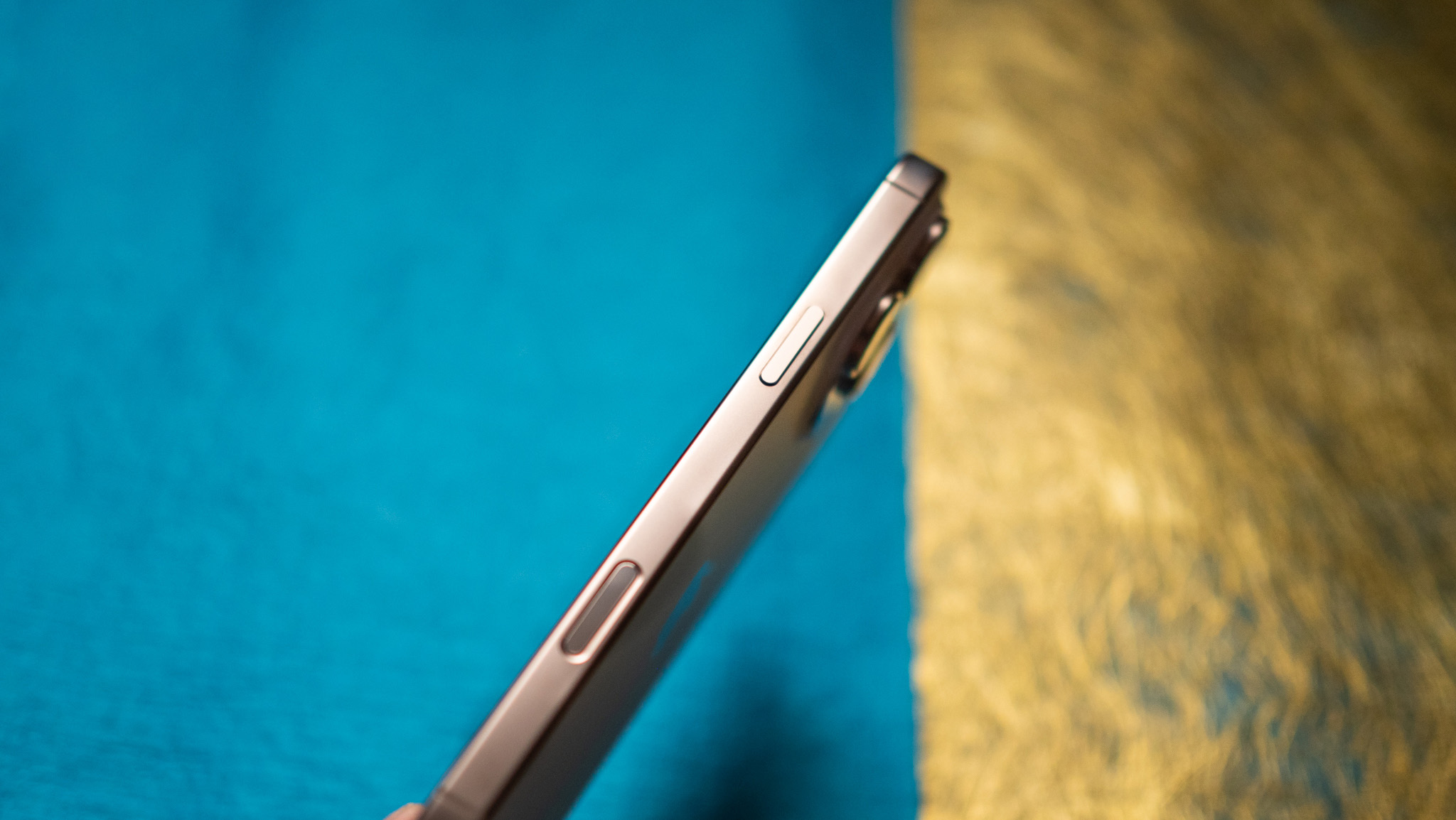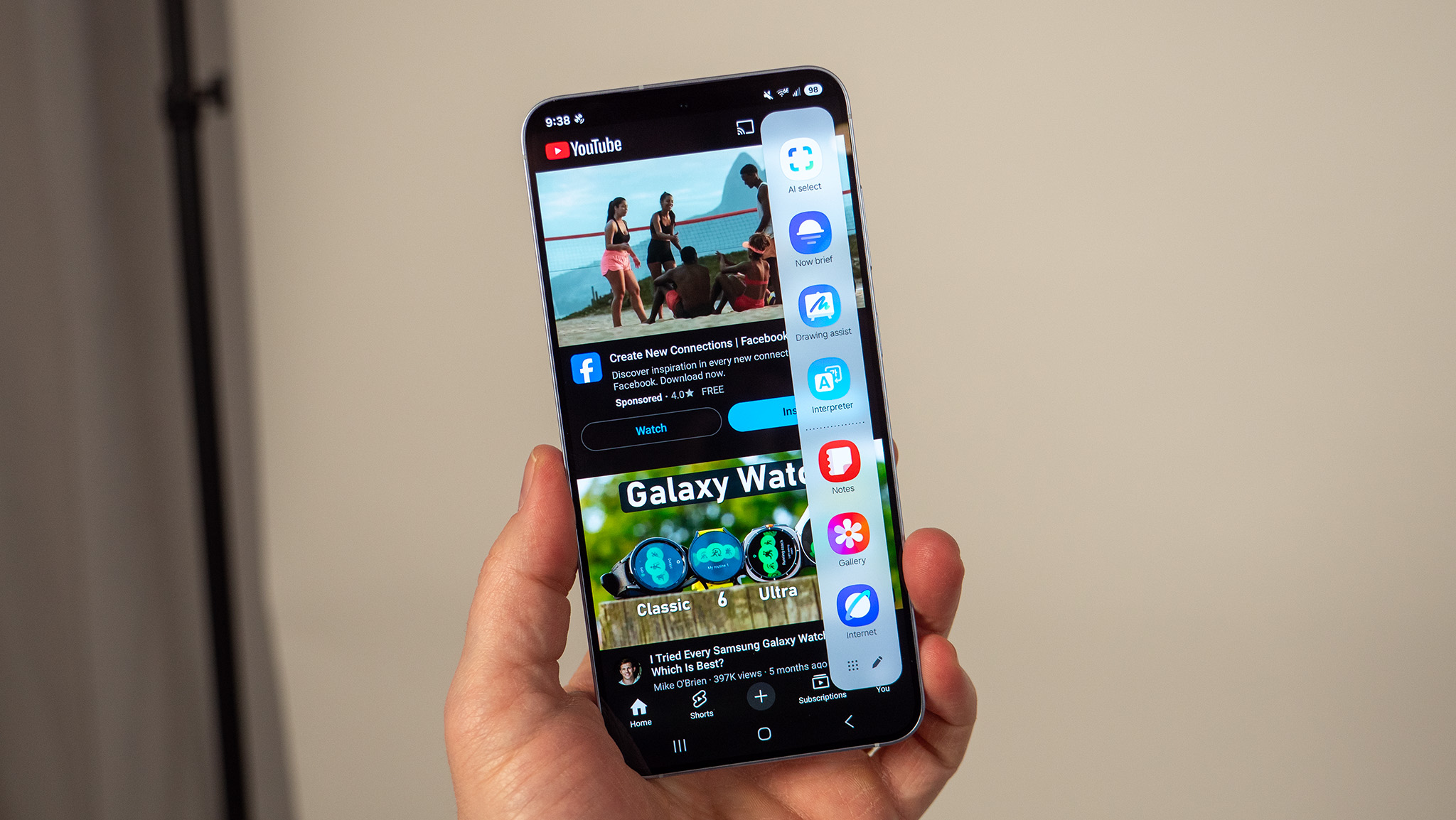Samsung Galaxy S25 vs. iPhone 16 Pro: Ecosystem battle
The Galaxy S25 is here, but can it go up against the iPhone 16 Pro?

A new Galaxy
The Samsung Galaxy S25 delivers meaningful hardware upgrades with the Snapdragon 8 Elite SoC, and a slimmer and lighter design. It doesn't look all that different from the S24, but the new colors and a ton of new Galaxy AI features are enough to make it worth a second look.
Pros
- Latest Qualcomm hardware
- Bright AMOLED display with 120Hz refresh rate
- New AI features for the camera app
- One UI 7 out of the box
- Seven years of software updates
- Slimmer and lighter design
- Same price as S24
Cons
- No meaningful battery or charging innovation
- Display still uses PWM dimming only

A fabulous choice
The iPhone 16 Pro is a great option if you're looking to switch to iOS. It is much better to hold and use than the Pro Max, and while it doesn't have as good a battery, it still lasts a day. The hardware continues to be the best around, you get great cameras with 4K video on all sensors and Dolby Vision, and the software has a suite of new AI tools.
Pros
- Powerful hardware that's great at gaming
- Versatile cameras at the back
- Design is better to hold and use
- Apple Intelligence has useful additions
Cons
- Average battery life with slow charging
- Costly
Samsung Galaxy S25 vs. iPhone 16 Pro: Design and display

Samsung doesn't like changing its design, with the last three iterations in this series looking largely identical. The Galaxy S25 continues the same design as its predecessor but with completely flat sides, front, and back. The design is characterized by a minimal camera module; each individual sensor is housed within a ring, and that's about it. The rings are more ruggedized this time around, which makes them contrast better with the glass back.
This design also leads to a cleaner look at the back, and having used devices with overly large camera modules like the Vivo X200 Pro, it is refreshing. There isn't much else to talk about in this area; the Galaxy S25 is notable because of its smaller size, and Samsung has shaved the weight and thickness even more with the S25. This makes it way lighter than the 16 Pro. The Galaxy S25 comes in Icyblue, Navy, Mint, and Silver Shadow.

On the subject of unchanging designs, the iPhone 16 Pro looks identical to its predecessor, which was the same as its predecessor, and so on. Basically, we've had the same design for quite a while now, and if nothing else, it is familiar.
Also familiar is the camera module at the back; the square housing is distinctive like no other, and even though the design is several years old by this point, it still looks great. The iPhone 16 Pro's flat profile is similar to previous years, but there are slight bevels this time around that make holding and using the phone that much better.
What's new is the camera control button that's located on the right; while this is an interesting addition, I don't really use it much, and the location makes it awkward to access when using the cameras on the device.
The iPhone 16 Pro comes with IP68 ingress protection as standard, and it is the only device that can be submerged in up to six meters of water — all other phones can only be immersed in 1.5 meters. The Galaxy S25 also gets an IP68 rating, just like its predecessors. Other Android devices like the Find X8 Pro and Vivo X200 Pro include IP69 protection as well, but Samsung chose not to go down that route just yet.
Samsung Galaxy S25 vs. iPhone 16 Pro: Hardware and cameras

Samsung went back to using Exynos designs with the Galaxy S24, but the Galaxy S25 series once again goes back to using Qualcomm exclusively, just like the Galaxy S23. The Galaxy S25 uses Qualcomm's latest Snapdragon 8 Elite, but it's not an off-the-shelf chip. Samsung and Qualcomm have collaborated to make a custom chip for the S25 series.
Get the latest news from Android Central, your trusted companion in the world of Android
The 8 Elite is a fabulous chip as it is. By switching to custom cores with the Snapdragon 8 Elite and a node shift to 3nm, Qualcomm is delivering sizeable gains in all key areas, and I'm excited to see how it holds up on the Galaxy S25.
In other areas, the S25 series now comes with 12GB of RAM as standard on all models, with Samsung moving away from 8GB base memory (as we've also seen with the Galaxy Z Flip 6). This is necessitated by all the AI-backed features coming to phones these days, and with Samsung leaning heavily on Galaxy AI, it's understandable that the brand is going with 12GB for better on-device AI capabilities.
| Category | Samsung Galaxy S25 | iPhone 16 Pro |
|---|---|---|
| Display | 6.2-inch, LTPO AMOLED 120Hz refresh rate | 6.3-inch LTPO OLED 120Hz, 2000 nits max, Ceramic Shield |
| OS | Android 15, One UI 7 | iOS 18.2 |
| Chipset | Snapdragon 8 Elite | Apple A18 |
| RAM | 12GB | 8GB |
| Storage | 128GB/256GB | 128GB/256GB/512GB/1TB |
| Rear camera 1 | 50MP main camera | 48MP main camera with sensor-shift OIS |
| Rear camera 2 | 12MP wide-angle | 48MP wide-angle |
| Rear camera 3 | 10MP 3x telephoto | 12MP 5x optical zoom lens with OIS |
| Front camera | 12MP | 12MP |
| Ingress protection | IP68 dust and water resistance | IP68 dust and water resistance |
| Connectivity | Wi-Fi 7, Bluetooth 5.4, NFC | Wi-Fi 7, Bluetooth 5.3, NFC, UWB |
| Security | Ultrasonic fingerprint sensor | Face ID |
| Audio | Stereo sound, USB-C | Stereo sound, USB-C |
| Battery | 4000mAh, 25W USB PD charging, 15W Qi wireless | 3582mAh, 30W charging, 25W MagSafe |
The iPhone 16 Pro has one of the best hardware packages in the industry, and there are no issues in daily use. The A18 Pro continues to deliver incredible performance, and it is particularly great at gaming; it manages to run console-quality games without any lag or jitter, and that's a considerable achievement. While Android hardware is just as good these days, you don't get the same caliber of games as iOS.
Even with a smaller battery, the iPhone 16 Pro manages to last a day without any issues, but the biggest issue in this area continues to be slow charging tech. It takes over an hour and a half to charge the device, and that's just too long in 2024. In a similar vein, the Galaxy S25 doesn't see any advancements in this regard, with Samsung still using its 25W charging tech for the smaller model.

Thankfully, the one area where there's a considerable difference is the cameras; the iPhone 16 Pro has the same main camera as last year, but you get a new 48MP wide-angle lens, and changes to the tuning means you get much better photos. The ability to change the color balance dynamically gives you significantly greater control in selecting the way resultant shots look, and it transformed how I use the device.
Sadly, Samsung hasn't changed the cameras on the S25, which means we can expect similar performance (good and bad) as the S24. Again, we'll have to wait till we review the phone to see if the new software makes the images and videos any better despite it having the same hardware.
There are some new camera features in the S25 that put it on par with the iPhone, as it's now able to capture 10-bit HDR videos from all four cameras. The Pro shooting mode in the camera app also gets Galaxy LOG and LUTs functionality, making even the base model a "pro" at capturing videos.
Samsung Galaxy S25 vs. iPhone 16 Pro: Software

The Galaxy S25 comes with One UI 7 out of the box, which is the biggest UI overhaul for Samsung in years. The Android 15-based interface has a host of new AI features, Samsung's usual utilities and the staple Galaxy AI features that continue to be the differentiator. Samsung is doubling down on AI with the S25 with AI Agents, personalized AI with local LLMs, and a deeper AI platform integration. Our initial takeaway from our brief hands-on with the S25 is that more users will want to use these AI features as many run locally and are less reliant on the cloud.
Apple's iOS 18 doesn't have much in the way of new features, with Apple Intelligence taking center stage. I think iOS is in need of a visual overhaul, but given its sizeable user base, it's unlikely Apple will make any massive changes to the software design.
Samsung has a distinct advantage when it comes to updates, with the Galaxy S25 set to offer at least seven guaranteed Android OS updates like its predecessors. The iPhone 16 Pro will pick up six platform updates as standard.
Samsung Galaxy S25 vs. iPhone 16 Pro: Which should you buy?

You can preorder the Galaxy S25 right away, and open availability will begin from February 7 in the U.S. The phone has the same starting price of $799 as the S24, but you should be able to snag some good discounts if you preorder it now. For most people, the S25 would be the ideal choice as it's $200 cheaper than the 16 Pro for the same amount of storage. It has a lighter design and is just as well built, the powerfull new chip should be just as good as the iPhone, and there are a ton of useful AI features that easily trump Apple's current offerings.
The only reason to pick the iPhone 16 Pro is if you're interested in seeing what iOS has to offer or you already use Apple products and want the ecosystem benefits. The phone has a reliable design, terrific hardware, outstanding cameras, and hassle-free software. The switch to USB-C connectivity makes it easier than ever to switch to the iPhone, and even if you're within the Google ecosystem, all your services work just as well on iOS.

A new Galaxy
Samsung hasn't changed the Galaxy S25 too much, but that also applies to the price. For the same price as the S24, you're getting a slimmer design, much better AI features, improved HDR recording capabilities, and powerful new chip.

A fabulous choice
The iPhone 16 Pro is my go-to recommendation if you're willing to switch to iOS. It has a great in-hand feel, and it is incredible in daily use. You get one of the best cameras around, and the software has plenty to like if you're into Google's ecosystem.

Harish Jonnalagadda is Android Central's Senior Editor overseeing mobile coverage. In his current role, he leads the site's coverage of Chinese phone brands, networking products, and AV gear. He has been testing phones for over a decade, and has extensive experience in mobile hardware and the global semiconductor industry. Contact him on Twitter at @chunkynerd.
- Roydon CerejoContributor
You must confirm your public display name before commenting
Please logout and then login again, you will then be prompted to enter your display name.
